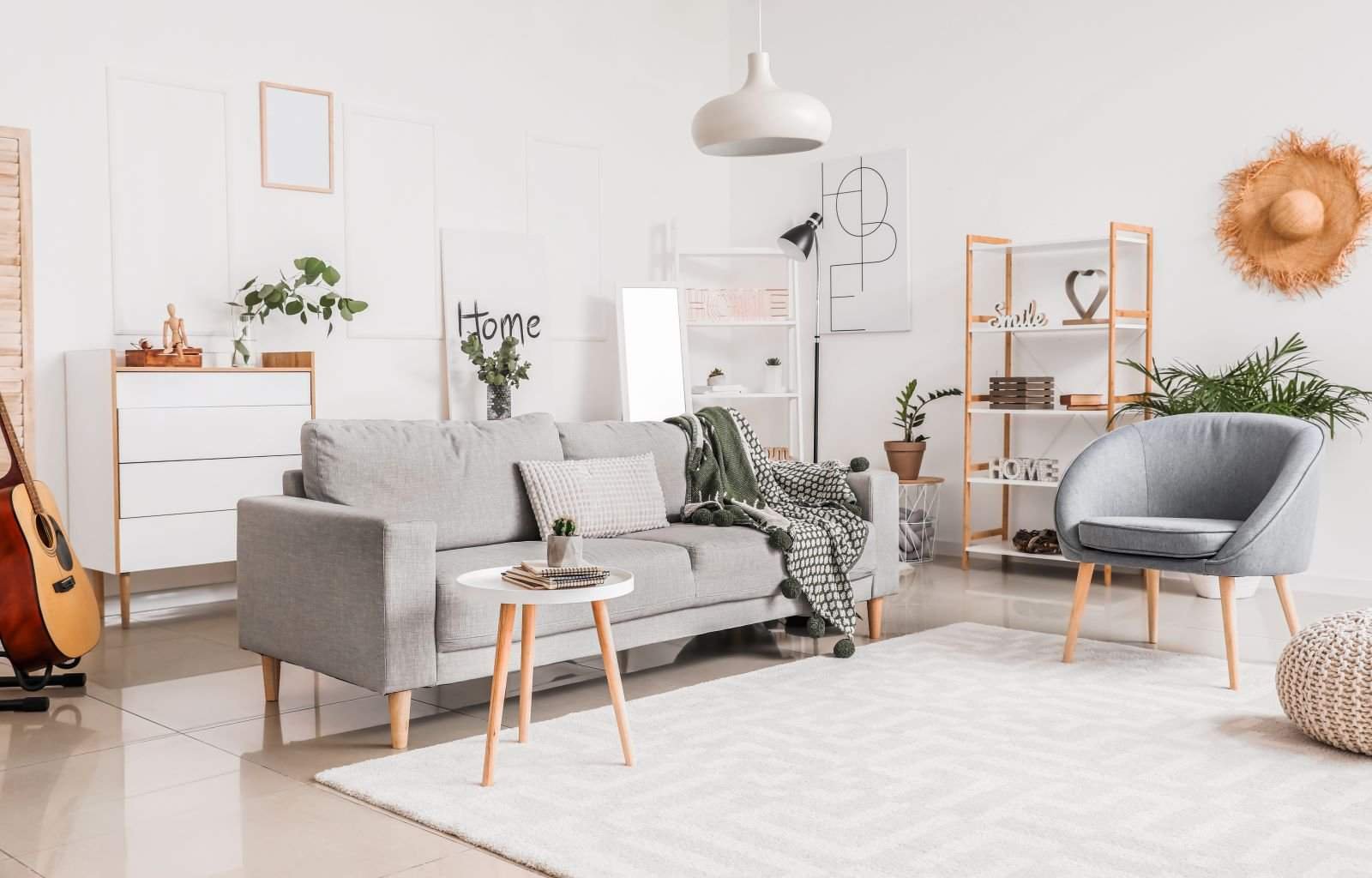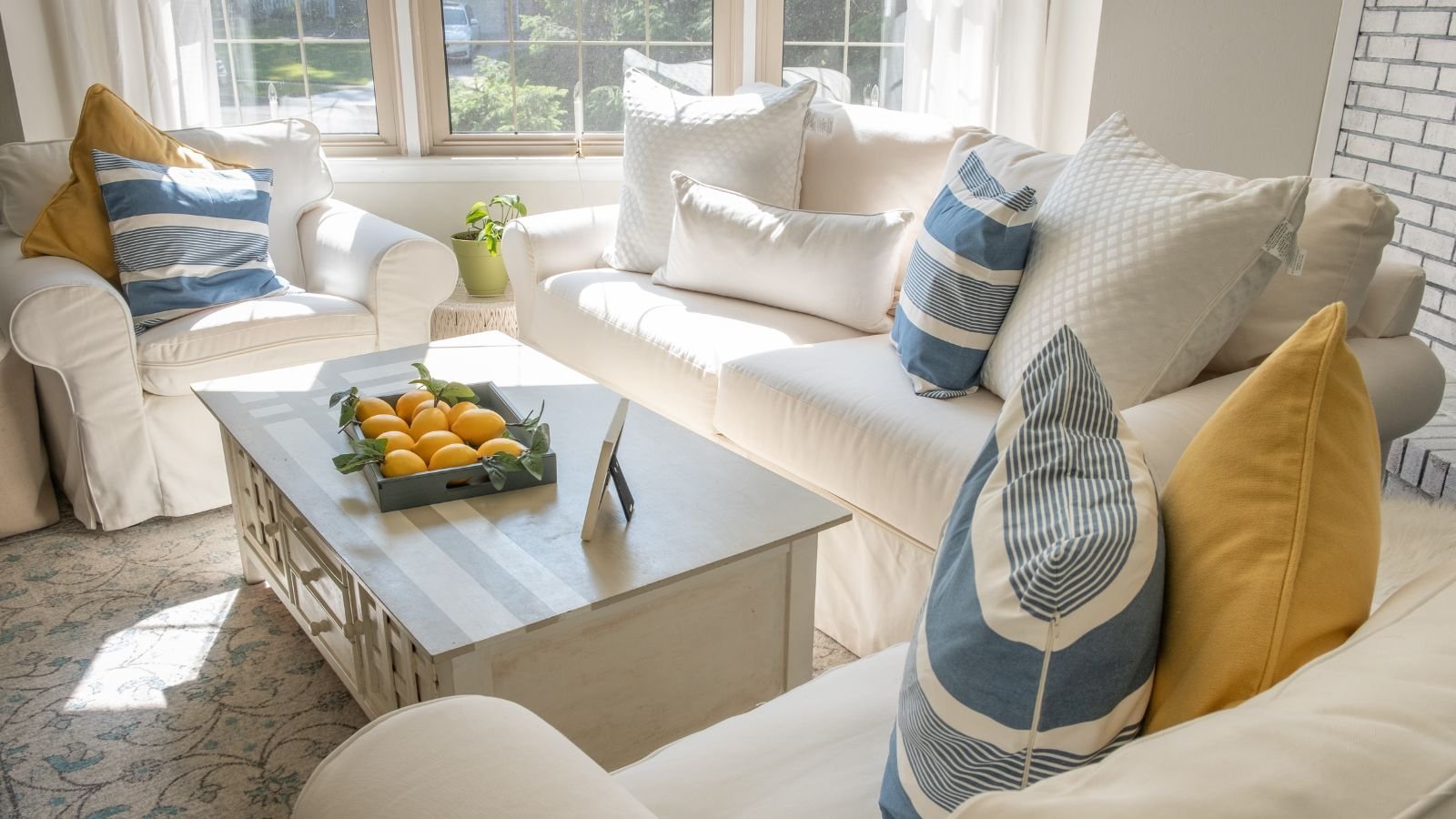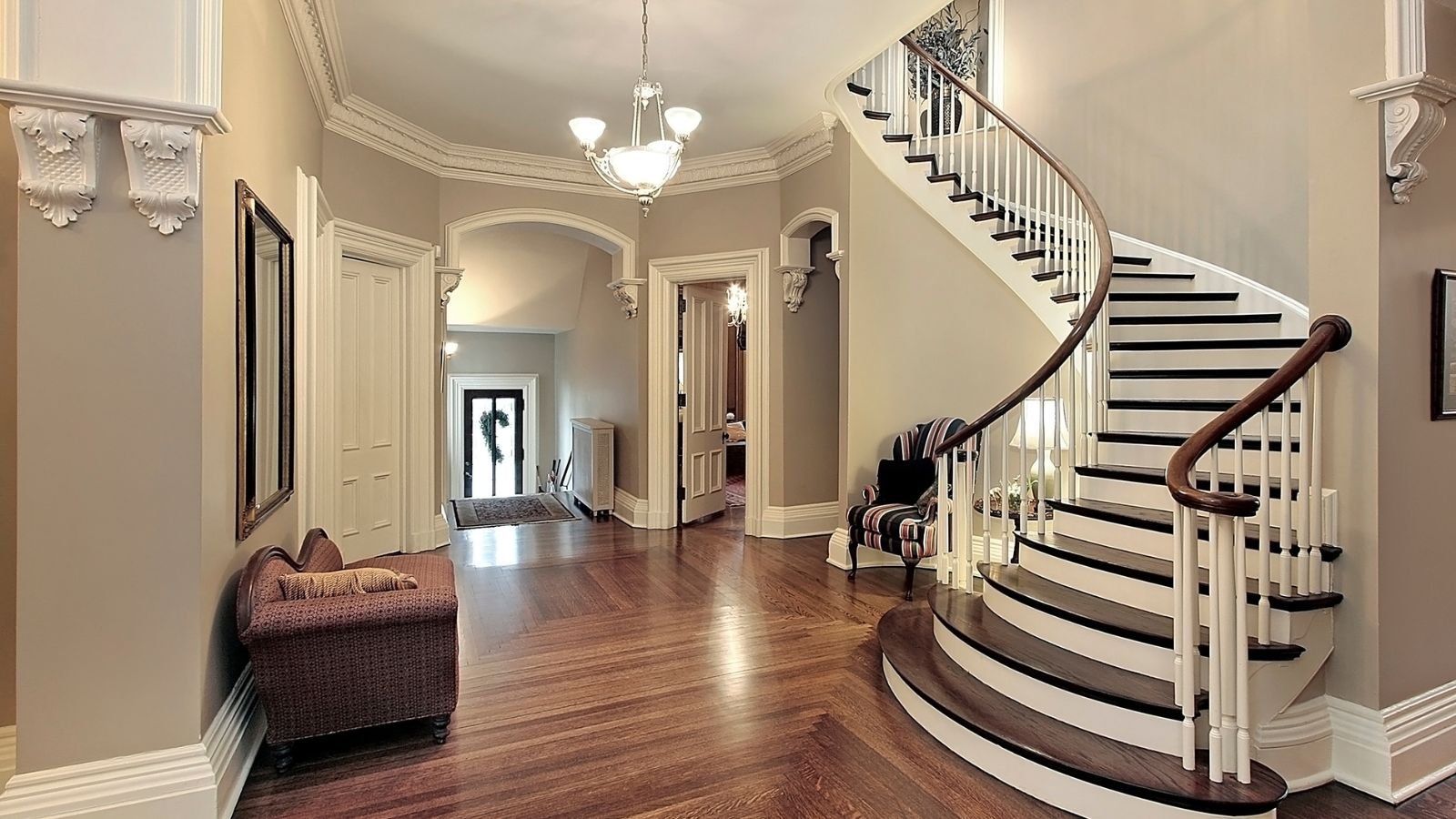Your living room is more than just a space to relax; it reflects your style and is a place where you welcome guests. A well-decorated living room can create a warm, inviting atmosphere and leave a lasting impression. However, common decorating mistakes can hinder the room’s potential.
Avoiding Clutter

Overcrowding the space with too much furniture or accessories creates a chaotic atmosphere. Instead of buying too many pieces, you can opt for multifunctional furniture with storage to maximize space without sacrificing style.
Mismatched Furniture Styles

Mixing furniture styles without a cohesive theme is a common mistake. It’s essential to choose furniture that complement each other. Consider choosing a central feature, like a statement piece, and designing the rest of the room around it. Consistency in materials, colors, and finishes will help create a harmonious and visually pleasing space.
Neglecting the Walls

Bare walls can appear stark and unfinished. To enhance the visual interest and personality of the space, consider adding artwork, mirrors, or decorative wall coverings. These elements can serve as focal points, highlight certain areas, and add depth and dimension to the space.
Forgetting About Comfort

When decorating a living room, it’s essential to prioritize comfort. Include comfortable seating options, such as sofas and armchairs with plush cushions and adequate support. Additionally, consider the room’s acoustics and choose soft furnishings like rugs and curtains to help absorb noise and create a more relaxing ambiance.
Inadequate Lighting

Insufficient lighting can significantly impact the ambiance of a living room. Patricia Rizzo from the Lighting Research Center advises, “My best advice, whatever you’re doing, whatever you want to achieve, is to create three layers of lighting—ambient, task, and accent.”
To create a well-lit space, a combination of natural and artificial lighting is essential. Consider using floor lamps, table lamps, or sconces to add warmth and dimension to the room.
Neglecting the Ceiling

A well-designed ceiling can significantly enhance the overall aesthetic. Avoid painting the ceiling a flat white, as this can make the room feel boxy and closed in. Instead, think about using a lighter shade on the ceiling than on the walls to enhance the feeling of height and spaciousness. You can also add decorative elements to the ceiling, such as crown molding, coffered ceilings, or a statement chandelier.
Overusing Bold Patterns

While patterns can add personality and interest to a room, using too many bold patterns can create a chaotic and overwhelming effect. It’s best to choose a focal point for the room, like a patterned rug or a standout piece of furniture, and then complement it with solid colors or subtle patterns for the rest of the elements to maintain balance and visual harmony.
Neglecting the Entryway

The entryway is the first thing guests see when they enter your home, so it’s important to make a good impression. Avoid clutter and create a welcoming atmosphere by adding a small console table, a decorative mirror, or a cozy seating area. This will set the tone for the rest of the room and make guests feel comfortable and at ease.
Ignoring Traffic Flow

Placing furniture without considering how people will move through the space can create obstacles and make the room feel cramped. Ensure there’s enough space between furniture pieces to allow easy movement.
Forgetting About Plants

Adding plants to your living room can bring a piece of nature indoors, enhance air quality, and add a sense of tranquility. NASA’s Clean Air Study found that indoor plants can remove up to 87% of air toxins in 24 hours, improving indoor air quality.
However, it is essential to select plants that match your lighting conditions and care needs. Overwatering or placing plants in low-light areas can lead to their demise.
Avoiding Doing The Floors

The floor is a room’s foundation, and it can significantly impact its overall aesthetic. Worn-out flooring can detract from a space’s appeal. To create a more welcoming atmosphere, consider upgrading to a new flooring material, such as hardwood, tile, or laminate.
Not Considering The Scal

When selecting furniture and decor, it’s essential to ensure the scale of the items matches the room’s size. The average size of a living room in the United States is between 300 and 400 square feet, sufficient to accommodate 6 to 10 people at a time. Large furniture can make a room feel cramped, while smaller pieces may seem out of place. Ensure that the furniture and accessories are proportionate to the room’s dimensions to create a visually balanced and harmonious environment.
Forgetting About Your Personal Style

Your living room should reflect your style and preferences. Don’t be afraid to experiment with different colors, textures, and patterns to craft a space that truly reflects your personality. Avoid following trends blindly, as they keep changing every season. Instead, focus on creating a space that you love and enjoy spending time in.
Overusing Accent Colors

While accent colors can add a pop of personality to a room, using too many can create a chaotic and overwhelming effect. Select a few accent colors that harmonize with your base colors and use them sparingly to create a visually striking yet balanced look.
Choosing The Wrong Texture

The texture is important to create a visually appealing and inviting space. To add depth and dimension to your living room, add a mix of textures, such as soft fabrics, smooth surfaces, and rough finishes. This can be achieved through the use of textured rugs, throw pillows, wall coverings, and decorative objects.
